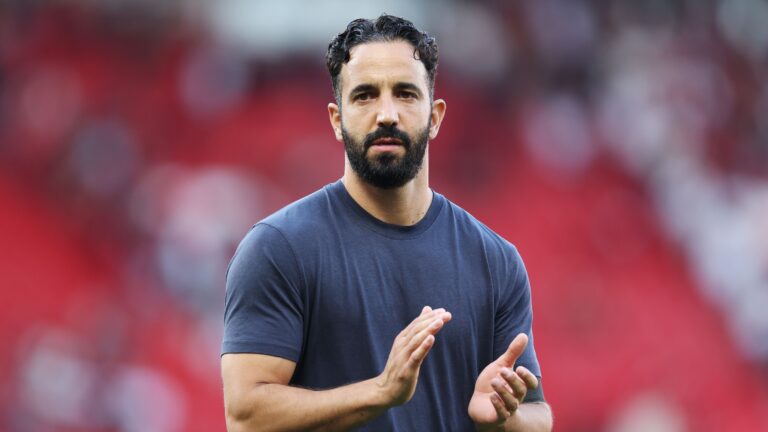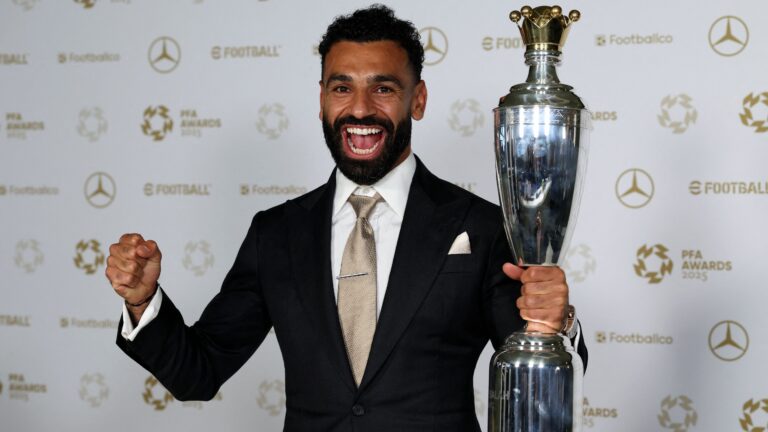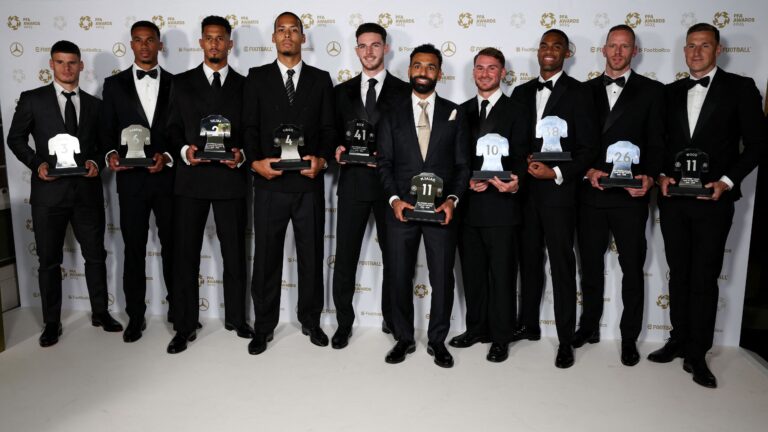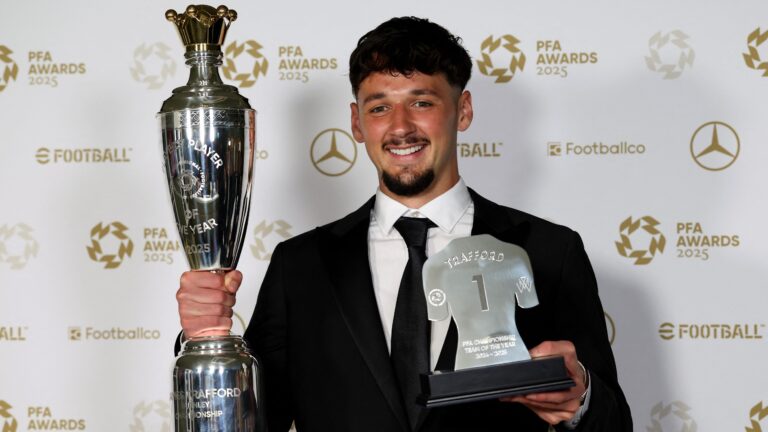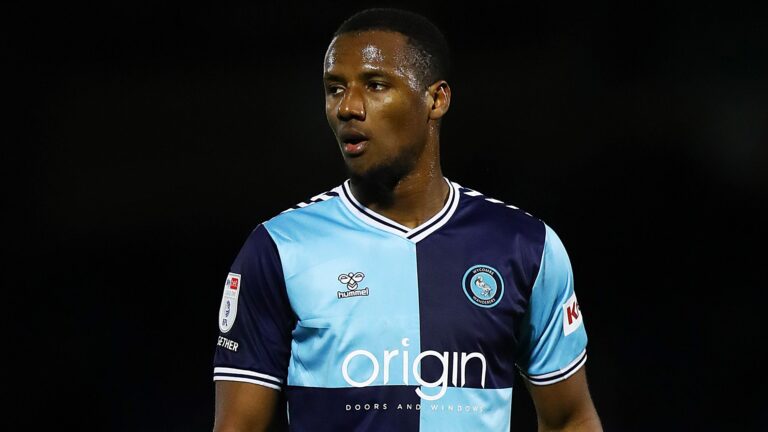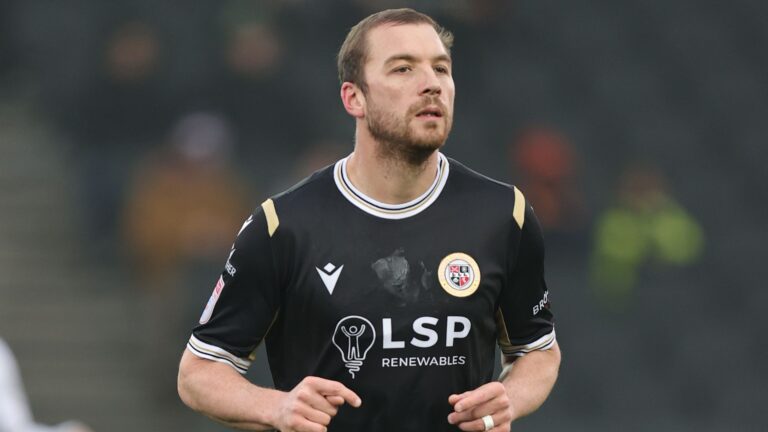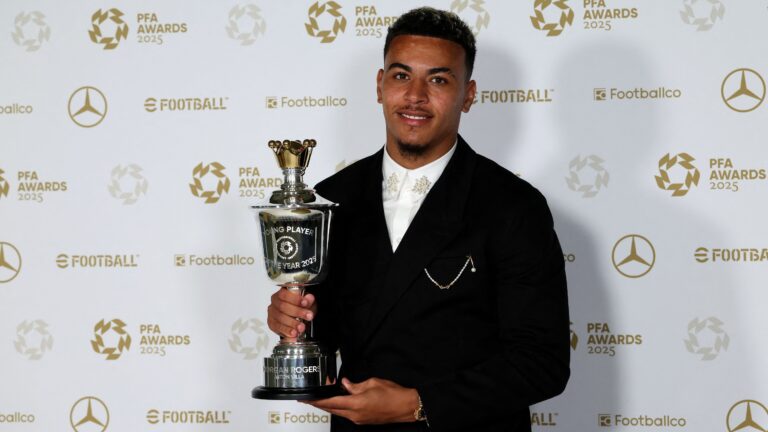Cucho Hernandez really shouldn’t have ended up in Columbus back in 2022. Sure, he’d been a failure at واتفورد, but there was, supposedly, European interest in the dynamic forward. The الدوري الإنجليزي الممتاز was a step too far, but Hernandez had plenty of options. He was exactly the kind of player that could make a fine living in إسبانيا, إيطاليا, or even ألمانيا.
Instead, he got on a plane and moved to… Ohio? It seemed an odd decision. The Columbus Crew, notoriously frugal spenders who prefer to invest throughout the squad rather than swing big, paid $10 million for his services.
Hernandez was made a Designated Player, and Columbus reached outside their normal salary restrictions to pay him just shy of $3 million per year. Two seasons later, the Crew shipped him off back to Europe, with ريال بيتيس paying them a reported $16M, plus a healthy sell-on clause.
Hernandez left Ohio with two trophies, having contributed 58 goals in 96 appearances. He was a runner-up for MVP in 2024 (and would have won it, had it not been for a certain Lionel Messi). He was, all said, the perfect modern DP: cheap enough, immensely effective, and flipped for a handsome profit.
This is a DP at its absolute best. But those slots can also be used remarkably poorly. For every Hernandez, there are two Lorenzo Insignes or Olivier Girouds. Remarkably, in the 18 years since MLS introduced the DP rule, teams haven’t uniformly figured out how to use the slot.
What should raise the standard of the league has, instead, become something of a mixed bag, with some genuine game changers brought to the league but just as many high-profile failures that can set a team back years.
BALLGM RANKS:Best DP signings of past 5 years | Worst DP signings of past 5 years






Cucho Hernandez really shouldn’t have ended up in Columbus back in 2022. Sure, he’d been a failure at Watford, but there was, supposedly, European interest in the dynamic forward. The Premier League was a step too far, but Hernandez had plenty of options. He was exactly the kind of player that could make a fine living in Spain, Italy, or even Germany.
Instead, he got on a plane and moved to… Ohio? It seemed an odd decision. The Columbus Crew, notoriously frugal spenders who prefer to invest throughout the squad rather than swing big, paid $10 million for his services.
Hernandez was made a Designated Player, and Columbus reached outside their normal salary restrictions to pay him just shy of $3 million per year. Two seasons later, the Crew shipped him off back to Europe, with Real Betis paying them a reported $16M, plus a healthy sell-on clause.
Hernandez left Ohio with two trophies, having contributed 58 goals in 96 appearances. He was a runner-up for MVP in 2024 (and would have won it, had it not been for a certain Lionel Messi). He was, all said, the perfect modern DP: cheap enough, immensely effective, and flipped for a handsome profit.
This is a DP at its absolute best. But those slots can also be used remarkably poorly. For every Hernandez, there are two Lorenzo Insignes or Olivier Girouds. Remarkably, in the 18 years since MLS introduced the DP rule, teams haven’t uniformly figured out how to use the slot.
What should raise the standard of the league has, instead, become something of a mixed bag, with some genuine game changers brought to the league but just as many high-profile failures that can set a team back years.
BALLGM RANKS: Best DP signings of past 5 years| Worst DP signings of past 5 years
David Beckham was, of course, the guy who started all of this. In the abstract, the DP rule makes a lot of sense. LA Galaxy needed to be able to pay the former مانشستر يونايتد and Real Madrid superstar a competitive wage. MLS salary cap rules were immensely restrictive back in 2007 (yes, more strict than today – even if it is hard to imagine.) So, the league created a rule that allowed clubs to spend, effectively, what they wanted on a player without taking a salary cap hit.
It was basically just a ploy to allow Beckham to come to the league. For perspective, the team-wide salary cap in 2007 was around $2.1M. The Galaxy, under the new rules, paid Beckham triple that per season.
Over time – intended or otherwise – it opened the doors to many European stasr who could have their salary matched – or at least acknowledged – by an MLS club. Teams in North America could never pay the same wages of European legends. But under the new rule, they could close the gap.
It paved the way for the likes of Juan Pablo Angel, Robbie Keane, Thierry Henry and Clint Dempsey to join the league from overseas. And MLS, to its credit, had adjusted with the times. As more players have turned their eyes to the U.S., it has adjusted DP rules. Teams can now have up to three DPs – although that requires some personnel and cap tweaking elsewhere.
MLS has always been about financial control, the league – for better or worse – fixated on having the final say on its teams salary cap and spending. The DP rule, in abstract, allows for the best of both worlds.
More recently, though, it’s become less about stardom and more about giving your team an edge. MLS has become increasingly competitive and tactically advanced. This was never really a league you could stroll through, and it certainly isn’t now. There is, in effect, little room for the guy past his best who decides to check in and out, enjoy a little American sunshine, and ride out the rest of his career.
These days, the DP is your one joker card on an otherwise excellent team, the difference maker that fits in but also has that extra bit of quality that makes him clearly better than everyone else. It is why, for example, Son Heung-Min should be such a perfect addition at LAFC; his workrate is still excellent but he will, in theory, torment MLS defenders more easily than most in the league.
Still, there are exceptions. The smartest usage of a designated player in recent years – even if his marketing skills aren’t maximized – is the averse-to-running-but-still-brilliant Lionel Messi. There can be no disputing that fact. Even if Messi is yet to win an MLS Cup, his sheer quality, impact on the league and jersey sales alone – never mind personal accolades – justify his immense salary.
But peer over the list of best DP signings of the past five years, and he is mostly an outlier. The smartest teams have found undervalued talent from slightly less glitzy markets – who still have a bit to prove. LAFC prepared for the end of the Carlos Vela era by bringing in Denis Bouanga, surplus to requirements at الدوري الفرنسي 1‘s Saint-Etienne.
Three years later, and he has scored more than 50 goals, and fired the Black and Gold to two major trophies. Hernandez was a similarly shrewd investment – sent to Europe and back again.
Nashville’s Hany Mukhtar (Brondby) and now-Cincinnati’s Evander (Midtjylland) followed a similar model. All four arrived either before or during their prime, and were routinely MVP contenders during their best years in the league. As a result, they put their team on the map and raised the level of their side.
But there’s not much flash in the playmaking nous of Mukhtar. Relative novices aren’t likely to be drawn to the way that Evander spends lots of time floating in and out of space before deciding to kick the ball very hard at the goal. Indeed, the allure of the European star has often been too much to turn down. It harkens back to the original Beckham model – simply buying the name you know without much consideration of fit.
The Englishman was signed not just for his footballing ability, but for the way he would undoubtedly raise the profile of the league. His two MLS Cups – won four years after he signed with Los Angeles – are a bonus.
Blaise Matuidi was a pretty disastrous outlay from Inter Miami in the pre-Messi years – most could have seen that coming as a panic-buy before the Herons could get off the ground.
Others are more curious. Lorenzo Insigne seemed shrewd for نادي تورنتو لكرة القدم when they signed him to a four-year deal in 2022. He was just six months from a بطولة أوروبا win with Italy, and had enjoyed a fine decade at Napoli. He fit an archetype of MLS playmaker that had worked before, too.
However, Toronto failed to consider that Insigne might not take MLS particularly seriously. The result was a disastrous tactical marriage and a disgruntled superstar, overpaid and wrongly utilized.
The LA Galaxy made a similar mistake with Douglas Costa, seemingly buying the Brazilian based on his European resume rather than the reality of a footballer in rapid decline who had never spent more than two consecutive years at a club. Xherdan Shaqiri and Olivier Giroud were similar traps.
The result in all four wasn’t just poor signings in isolation. Rather, they had squads, in theory, shaped around them, and when the players fizzled out, so too did the balance of the team. The Galaxy needed two years to recover. Miami needed a Messi to revive their fortunes. Toronto and Chicago are certainly still reeling – and will be for some time.
And that brings up the intriguing scenario of moving on from a DP. MLS, in recent years, has positioned itself shrewdly in the global transfer market. It is now a selling league, an ideal talent factory for young talent to be acquired, developed, and sold for a handsome profit – with a sell-on clause worked in to guarantee future returns. This is hardly a new concept in football, but it’s one that MLS has exploited remarkably well.
DPs, done well, can be the perfect way of doing just that. Hernandez is the perfect case study. Columbus took a depreciating asset, slightly undervalued by the market, and sold him for a profit. If Hernandez succeeds at Real Betis – he scored five goals in his first three months at the club – the Spanish side will move him on for more money.
The Crew could be in for a significant outlay once again. Portland completed a similar feat when they moved Evander on for $13M after signing him for $10M – even if that meant trading him to an MLS rival. Atlanta United did the same with Thiago Almada, making an initial $4M profit with a sell-on clause attached.
Those, of course, are the best case scenarios. But there have also been some disasters. Long-term contracts are difficult to get out of. Footballers, employed to do a job, don’t tend to like stop doing their job for no reason and with no financial incentive. Who, in their right mind, throws millions in the bin? Insigne, Federico Bernadeschi, Costa and Matuidi were all poor outlays for that reason. They were expensive to bring on, offered no obvious compensation, and little success to point to, either.
It’s a balance, then – and one most MLS clubs have struggled to strike. The best DPs of the last five years have been immediate upgrades to their clubs on and off the field, while also bringing in handsome financial returns, and serving as moveable assets. Very few can be expensive propositions who leave for little to no return (it is a challenge LAFC will presumably someday face with Bouanga).
There are, of course, some exceptions. Messi and now Heung-Min Son are transcendent in terms of quality and marketing appeal. Son, even if he does not hit the ground running, or even contend for MVP, will likely prove to be an excellent signing in kit sales alone. It’s hard to imagine him struggling, too, given that he spilled all of the right platitudes about “winning titles” and “working hard.”
Hernandez, then, is the perfect case. So too will Evander be when he moves for big money. Riqui Puig also figures to go for a tidy profit at some point. If those clubs reinvest well, then they have nailed it.
If that is the case, why don’t all 30 MLS teams simply get DPs right? It’s a tricky question, and one that depends on a variety of factors. DPs, remember, come almost entirely out of an owner’s pocket, and rely on an individual’s willingness to spend. Some clubs tend to go big, shelling out the cash in shrewd ways. Others simply can’t attract that kind of talent – or refuse to break the bank, even when they are physically allowed to.
In short, it has been nearly 20 years since the DP rule was introduced, and clubs are still figuring out exactly what it is. When used right, DPs are the extra cutting edge for any team, the 11th man to complement and actualize a squad of a very good 10. A well-used one raises the level of a team while also delicately keeping everything else in equilibrium. At their worst, they can send a successful club into freefall. The unfortunate reality is that the only way to learn takes a whole lot of cash.



